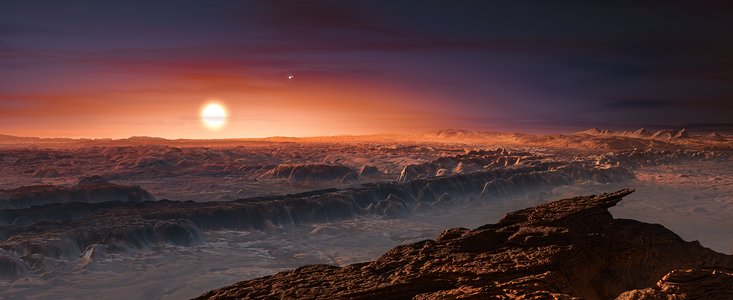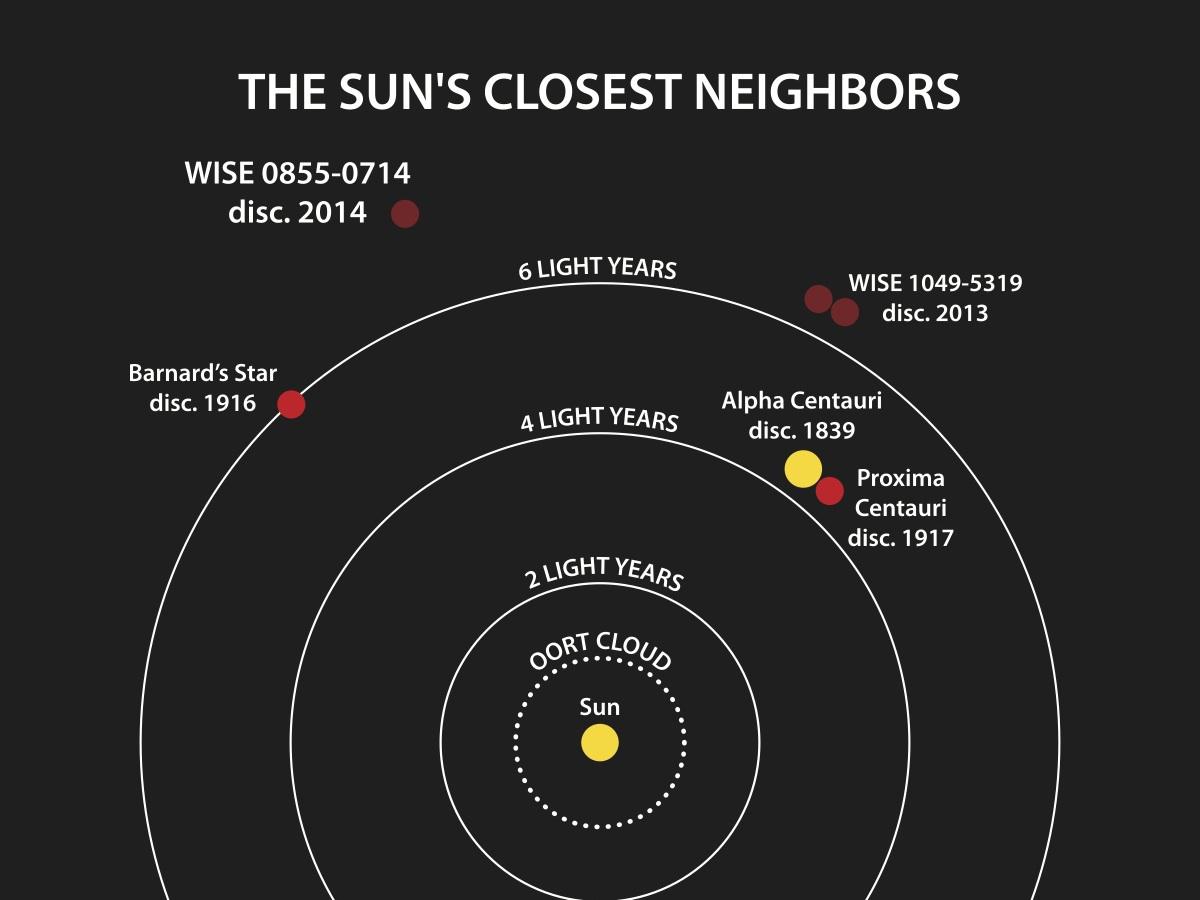[:ja]8月24日、ヨーロッパ南天天文台(ESO)の研究者たちが、地球から4.2光年の距離にある太陽に最も近い恒星プロキシマ・ケンタウリを周回する地球型惑星プロキシマbを発見したと発表しました。

地球の約1.3倍の質量、公転周期11.2日と、恒星アルファ・ケンタウリの相当な近傍を周回していますが、この恒星は赤色矮星で太陽の7分の1の質量で、太陽よりはるかに発する熱が少なく、生命が居住できる可能性があるハビタブルゾーンに存在するとして、液体の水の存在の可能性も示唆されています。

ちなみにNASAがプロキシマ・ケンタウリの場所をわかりやすく図示しています。人類が創り出した最も速い物体が1977年に地球を出発したボイジャー1号で、秒速約17kmで太陽系から遠ざかっていますが、この速度で4.2光年を飛ぶには7.4万年かかります。残念ながらこの航法では、我々の存命中にプロキシマbを見るのは難しそうです。
ウェブ地球儀で地球俯瞰画像を見る: LiVEARTH
[Earthview Wonders] No.67: Discovery of Earth-like Planet
On Aug. 24, European Southern Observatory (ESO) announced that they discovered an Earth-like planet Proxima b that rotates around Proxima Centauri, a 4.2 light-year distant star.

Proxima b is 1.3 times larger than the Earth in mass, whose orbital period around Proxima Centauri is only 11.2 days. This looks too close to their Sun, but red dwarf Proxima Centauri radiates much smaller energy than our Sun and therefore Proxima b is considered to be located in the habitable zone, implying the potential existence of water.

NASA gives a comprehensible map of Proxima Centauri as follows. The fastest man-made object is Voyager 1 which left Earth in 1977, flying at 17km/s. Unfortunately 17km/s will cover 4.2 light years in 74,000 years and with our current technology it seems difficult to physically observe Proxima b in our lifetime.
See earthview photo gallery with web-globe: LiVEARTH[:en][Earthview Wonders] No.67: Discovery of Earth-like Planet
On Aug. 24, European Southern Observatory (ESO) announced that they discovered an Earth-like planet Proxima b that rotates around Proxima Centauri, a 4.2 light-year distant star.

Proxima b is 1.3 times larger than the Earth in mass, whose orbital period around Proxima Centauri is only 11.2 days. This looks too close to their Sun, but red dwarf Proxima Centauri radiates much smaller energy than our Sun and therefore Proxima b is considered to be located in the habitable zone, implying the potential existence of water.

NASA gives a comprehensible map of Proxima Centauri as follows. The fastest man-made object is Voyager 1 which left Earth in 1977, flying at 17km/s. Unfortunately 17km/s will cover 4.2 light years in 74,000 years and with our current technology it seems difficult to physically observe Proxima b in our lifetime.
See earthview photo gallery with web-globe: LiVEARTH[:]